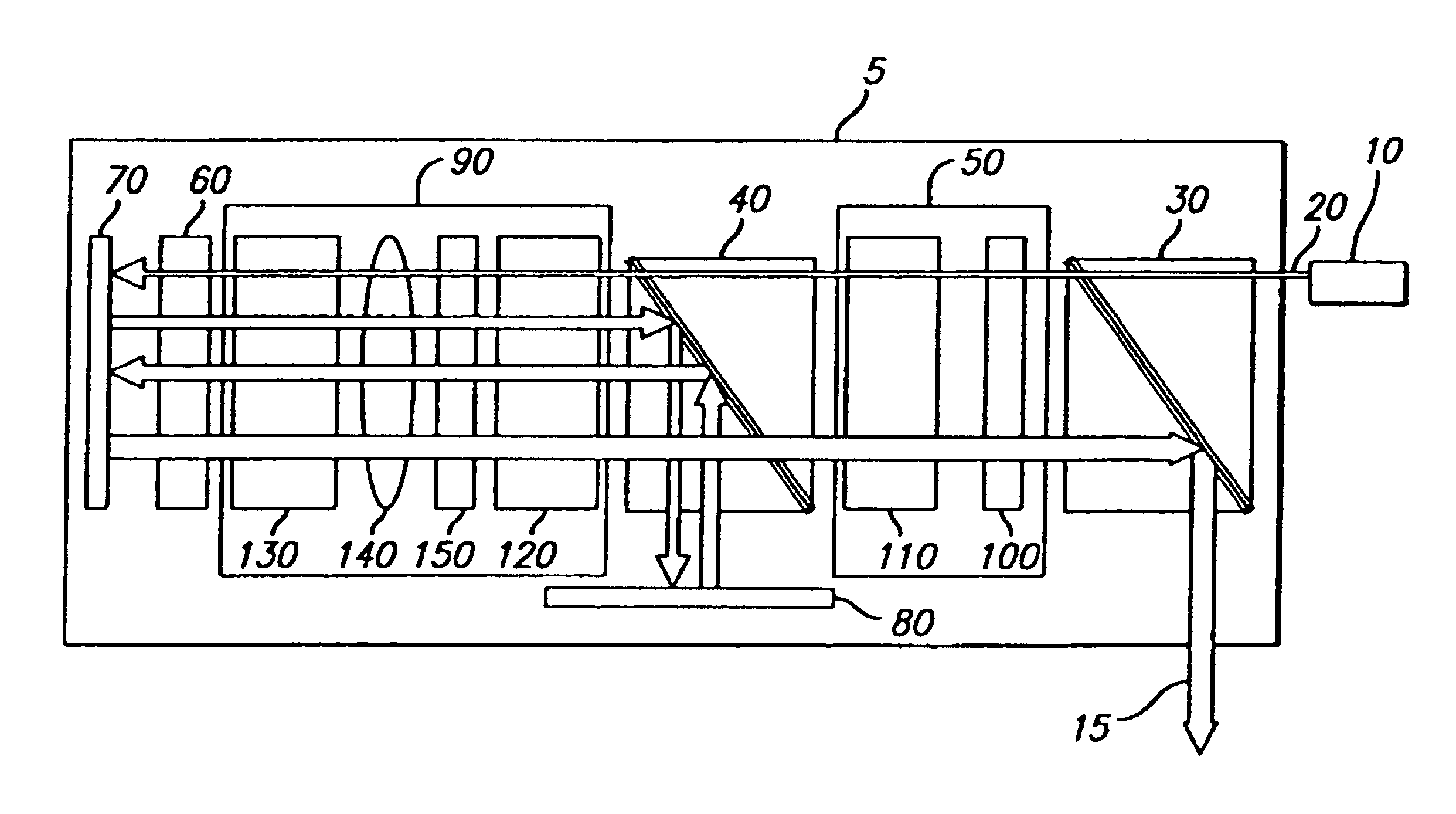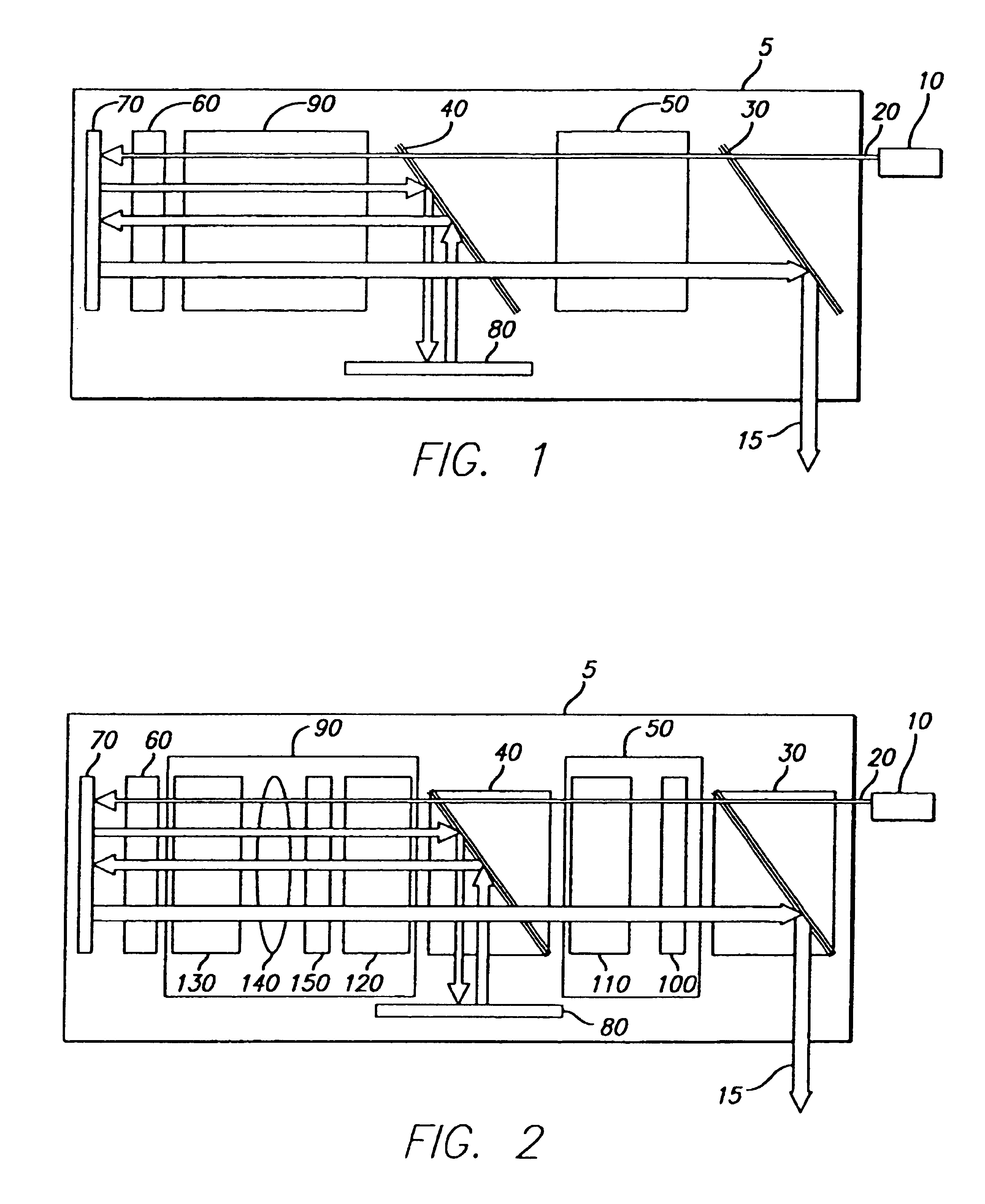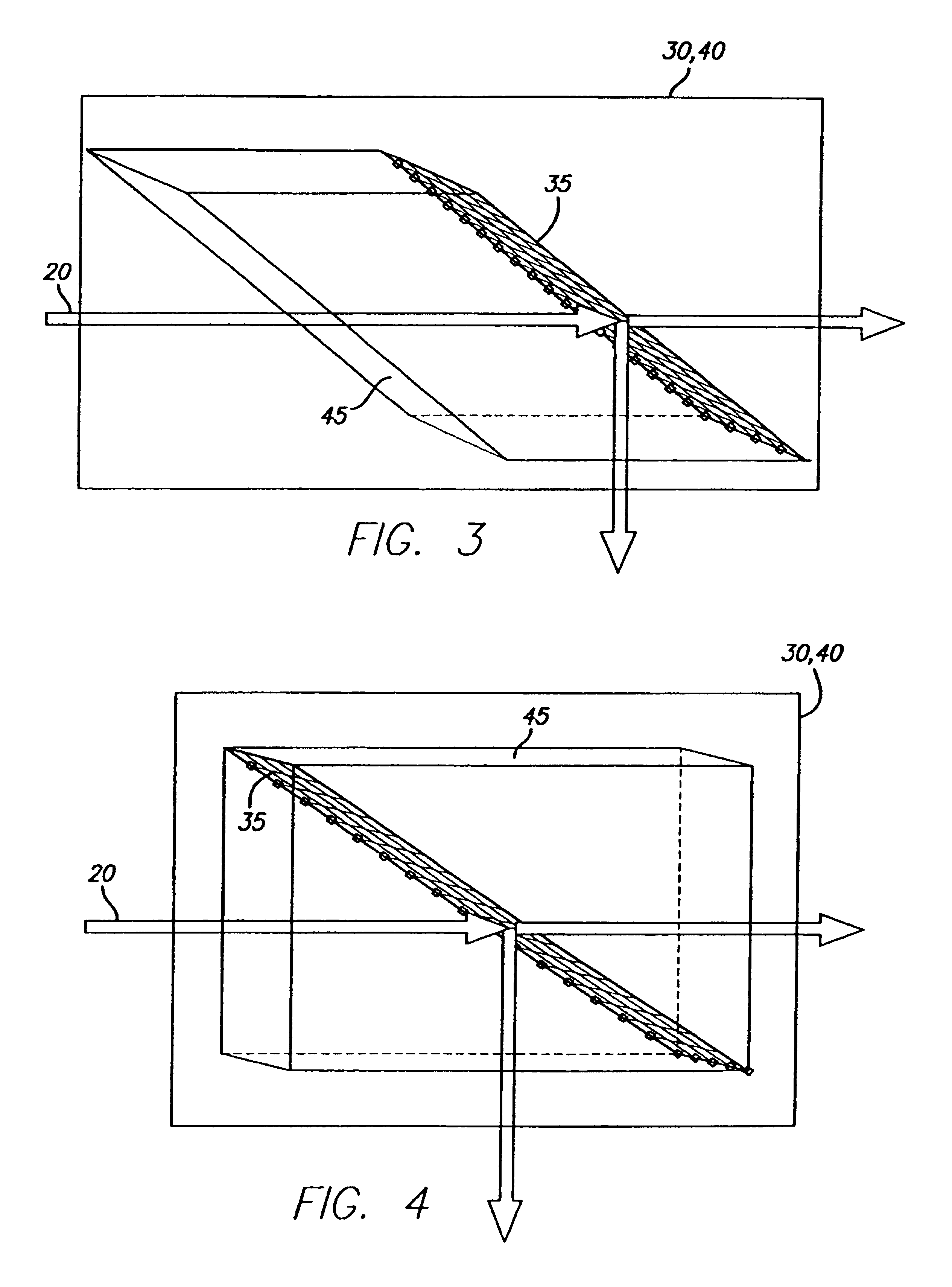High intensity and high power solid state laser amplifying system and method
a laser system and laser technology, applied in the direction of laser details, excitation process/apparatus, active medium shape and construction, etc., can solve the problems of limiting and even reducing achievable power and intensity gains, inefficient or even inoperable conventional laser and amplifying systems, and achieving high power and high intensity lasers. , to achieve the effect of efficient reflection, efficient heat dissipation, and high power
- Summary
- Abstract
- Description
- Claims
- Application Information
AI Technical Summary
Benefits of technology
Problems solved by technology
Method used
Image
Examples
Embodiment Construction
[0059]In accordance with the present invention, a system and a method are provided that produce high power and high intensity laser beams of high quality.
I. System and Method Overview
[0060]In an exemplary embodiment as illustrated in FIG. 1, the present invention provides an external laser source 10 (e.g., a master oscillator) and a laser amplifier 5. The external laser source 10 generates an input beam 20 that is amplified by the laser amplifier 5. The laser amplifier 5 includes a first polarizing beam splitter (PBS) 30, a second PBS 40, a directional polarization rotator (DPR) 50, a non-directional polarization rotator (NPR) 60, a first reflector 70, a second reflector 80 and a pumping module 90. In the illustrated embodiment, the laser amplifier 5 is configured as a four-pass optical amplifier. However, the present invention also contemplates an n-pass optical amplifier in which n is a cardinal number. Furthermore, the present invention contemplates modifications by those skilled...
PUM
 Login to View More
Login to View More Abstract
Description
Claims
Application Information
 Login to View More
Login to View More - R&D
- Intellectual Property
- Life Sciences
- Materials
- Tech Scout
- Unparalleled Data Quality
- Higher Quality Content
- 60% Fewer Hallucinations
Browse by: Latest US Patents, China's latest patents, Technical Efficacy Thesaurus, Application Domain, Technology Topic, Popular Technical Reports.
© 2025 PatSnap. All rights reserved.Legal|Privacy policy|Modern Slavery Act Transparency Statement|Sitemap|About US| Contact US: help@patsnap.com



